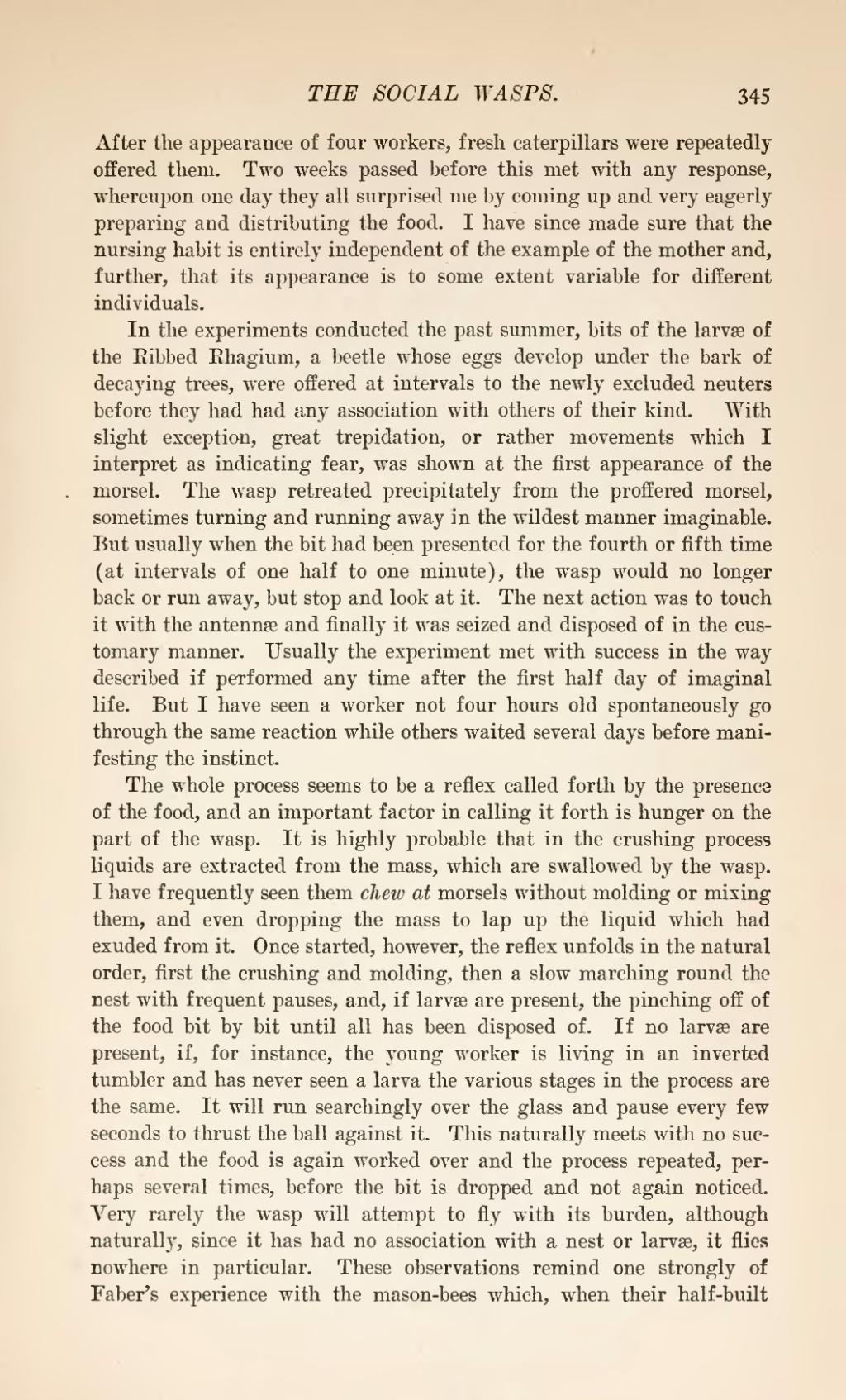After the appearance of four workers, fresh caterpillars were repeatedly offered them. Two weeks passed before this met with any response, whereupon one day they all surprised me by coining up and very eagerly preparing and distributing the food. I have since made sure that the nursing habit is entirely independent of the example of the mother and, further, that its appearance is to some extent variable for different individuals.
In the experiments conducted the past summer, bits of the larvæ of the Ribbed Rhagium, a beetle whose eggs develop under the bark of decaying trees, were offered at intervals to the newly excluded neuters before they had had any association with others of their kind. With slight exception, great trepidation, or rather movements which I interpret as indicating fear, was shown at the first appearance of the morsel. The wasp retreated precipitately from the proffered morsel, sometimes turning and running away in the wildest manner imaginable. But usually when the bit had been presented for the fourth or fifth time (at intervals of one half to one minute), the wasp would no longer back or run away, but stop and look at it. The next action was to touch it with the antennæ and finally it was seized and disposed of in the customary manner. Usually the experiment met with success in the way described if performed any time after the first half day of imaginal life. But I have seen a worker not four hours old spontaneously go through the same reaction while others waited several days before manifesting the instinct.
The whole process seems to be a reflex called forth by the presence of the food, and an important factor in calling it forth is hunger on the part of the wasp. It is highly probable that in the crushing process liquids are extracted from the mass, which are swallowed by the wasp. I have frequently seen them chew at morsels without molding or mixing them, and even dropping the mass to lap up the liquid which had exuded from it. Once started, however, the reflex unfolds in the natural order, first the crushing and molding, then a slow marching round the nest with frequent pauses, and, if larva? are present, the pinching off of the food bit by bit until all has been disposed of. If no larvæ are present, if, for instance, the young worker is living in an inverted tumbler and has never seen a larva the various stages in the process are the same. It will run searchingly over the glass and pause every few seconds to thrust the ball against it. This naturally meets with no success and the food is again worked over and the process repeated, perhaps several times, before the bit is dropped and not again noticed. Very rarely the wasp will attempt to fly with its burden, although naturally, since it has had no association with a nest or larvæ, it flies nowhere in particular. These observations remind one strongly of Faber's experience with the mason-bees which, when their half-built
